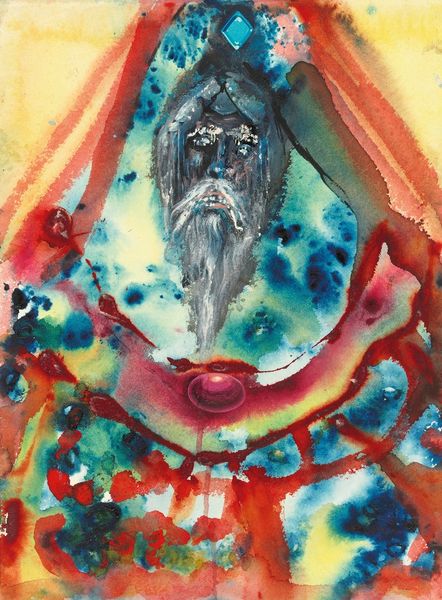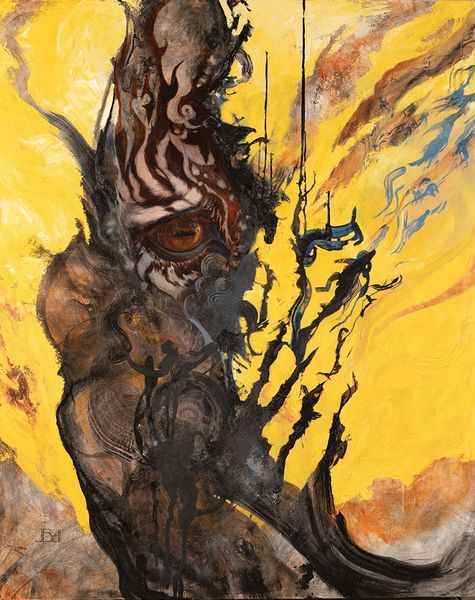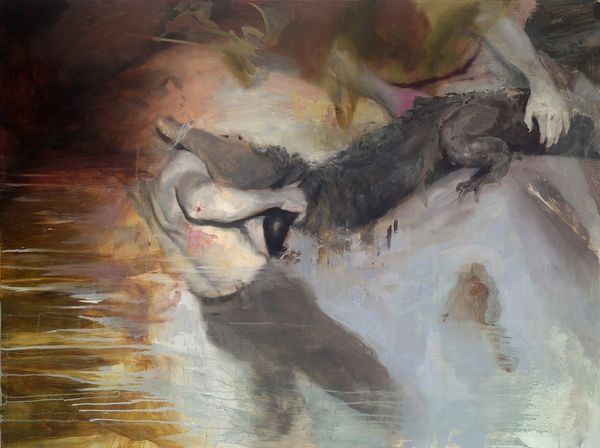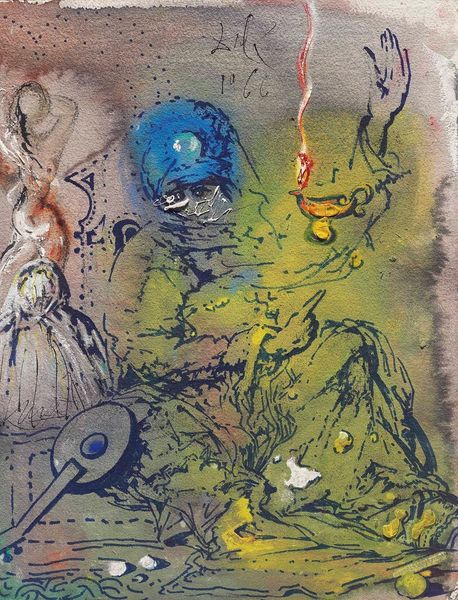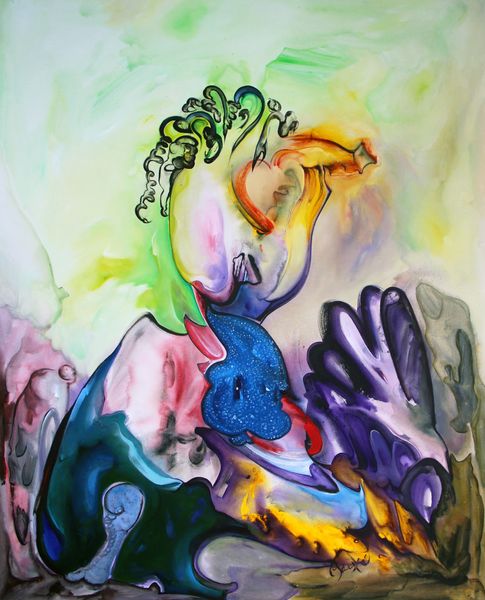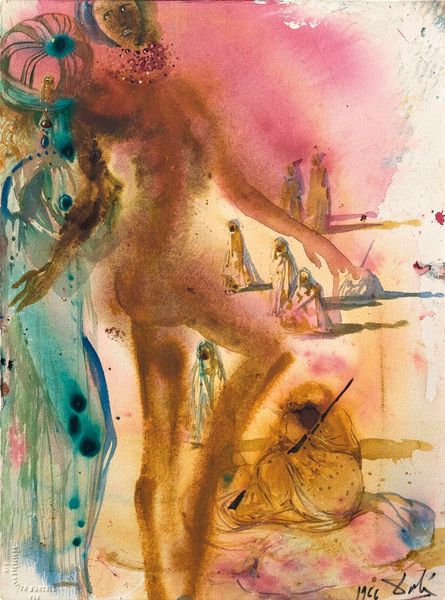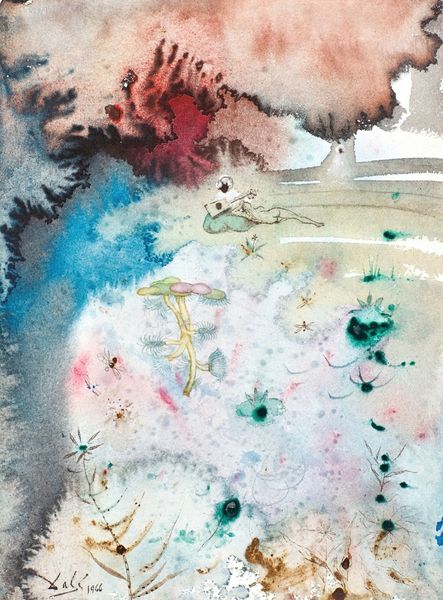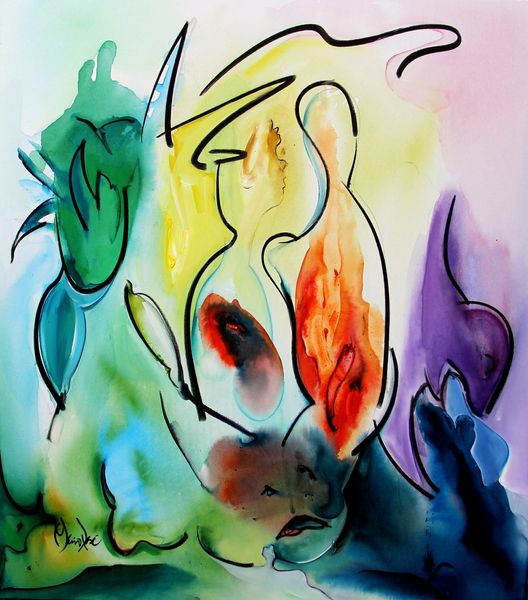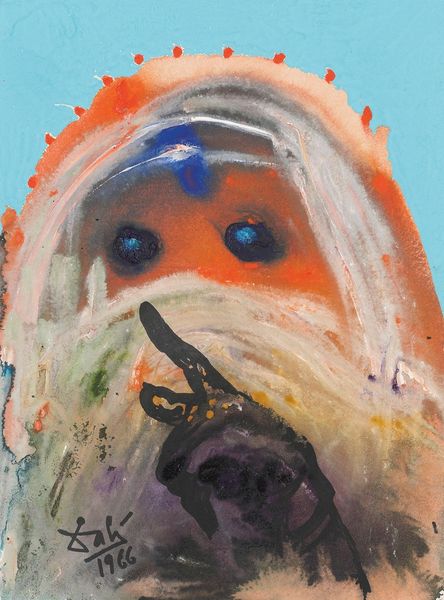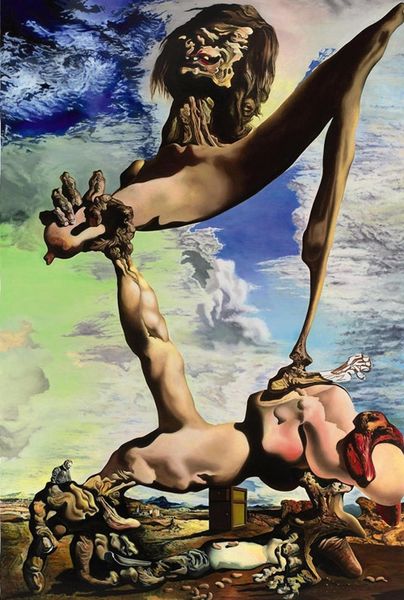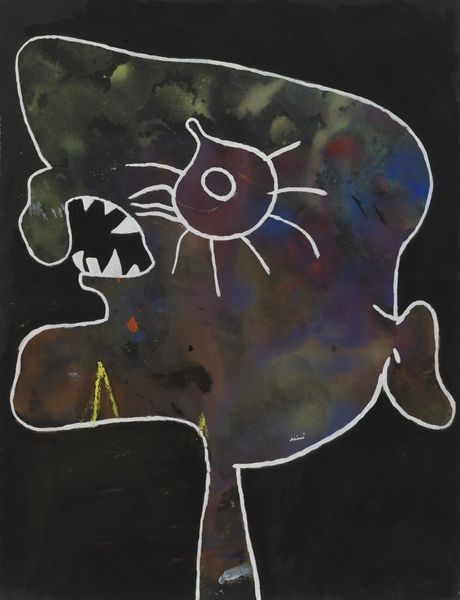
watercolor
#
portrait
#
fantasy-art
#
oil painting
#
watercolor
#
watercolour illustration
#
nude
#
surrealism
Copyright: Modern Artists: Artvee
Curator: My immediate response is repulsion. A feeling of something monstrous and grotesque. It's deeply unsettling. Editor: And that is perhaps the intended effect. The work before us is called "Polyphème" by Salvador Dalí. While undated, it is demonstrative of his surrealist period. Executed in watercolor, it merges the human with the monstrous. Curator: Absolutely. In mythical terms, Polyphemus, the cyclops, is known for his brutal savagery in Homer’s Odyssey. He is a symbol of untamed, primal forces. The single, oversized eye staring out amplifies this sense of being watched, scrutinized. Even the lashes are exaggerated and disconcerting. Editor: Dalí consistently engaged with classical themes and repurposed them for a modern audience. Remember his fascination with Freudian psychology. What do you make of the disembodied nature of the figure and the grotesque, visceral marks on its body? Curator: Those marks… they could represent wounds, psychic traumas made visible. Watercolor lends itself to fluidity, a blurring of boundaries. In effect, this isn’t simply a monster; it's a landscape of pain, a fractured psyche laid bare. His gaze looks somehow accusatory, demanding a reckoning with its own suffering. Editor: Indeed. Furthermore, by depicting the monster as simultaneously abject and eroticized, the artist perhaps challenges the norms of beauty. Polyphemus's nudity clashes with the expectation that classical nudes celebrate perfect form. The visible body hair adds to the challenge. Curator: Precisely. Dalí’s visual language pulls at our ingrained associations. Even that suggestion of landscape at the lower portion suggests a mindscape. It seems less like the classical landscape we often find with mythical stories and more an alien location. It’s brilliant precisely because it's disturbing. It makes us question what we accept as normal and acceptable. Editor: Considering Dalí's frequent questioning of societal constructs, that analysis rings true. "Polyphème" pushes us beyond comfortable aesthetics. Curator: Well, this journey through the unnerving depths of Dalí’s "Polyphème" has really challenged my perceptions, exposing how cultural symbols can powerfully manipulate emotion. Editor: Likewise, examining this representation of monstrous identity has underlined how art continues to unsettle conventions while probing humanity.
Comments
No comments
Be the first to comment and join the conversation on the ultimate creative platform.
